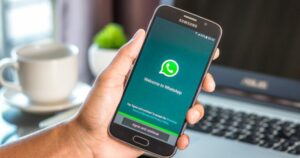Travelling from Pune to Goa during lockdown 5, Know the Dos and Don’ts

Prajakta Joshi
Pune/Goa, June 7, 2020: For Goans stranded in Maharashtra (Pune, specifically), getting a permit to travel as well as entering Goa is a relatively convenient process. However, currently the travel is easier if you have your own or rented vehicle, or are open to travelling in a train. If you are a Goan waiting to go back home during this lockdown, this is how you can prepare for the journey, and have a smooth travelling.
E-pass/permit: The process of applying for a travel pass online from Pune is a very easy process, provided you have the following documents:
-
AADHAR Card
-
No-symptoms Medical Certificate
-
NOC from the destination authority
-
Self-declaration that you don’t reside in any of the containment zones in Pune.
The application for the e-pass could be filled at covid19.mhpolice.in
Any general practicing physician in the city could provide you with a medical certificate after checking your temperature, blood pressure, pulse rate and oxygen saturation. As for the NOC, you could fill a self-declaration form on https://www.goa.gov.in/return-
Mode of transport: On Friday, June 5, 2020, early morning at around 6 am, I began my journey from Pune to Goa in a hired car. A hired car seemed to be the safest option in these times. While there are a couple of trains running between Pune Station to Madgaon in Goa, several COVID-19 positive patients being found in the trains made my parents weary of that option. There are no direct private buses or flights from Pune to Goa as of yet. However, travelling in a hired car sure burns a hole in your pocket, as the rental companies charge between Rs 9,000 to 12,000 for the trip, which also includes charges for the return journey.
I chose for the driver to drop me at the Goa-Maharashtra border at Patradevi Checkpost, from where my father picked me up in his own car.
Carry food/water with you: As most of the hotels and dhabas on the way are closed, it’s advisable to carry your own food and water for the way. Some smaller eateries are open, but it’s better not to eat there for hygiene and safety reasons. As for using washrooms, keep your eyes open for petrol pumps.
Carry raincoat/umbrella for the queue at Goa border: Whether you have a rented car, or your own vehicle, you’ll need to stop at the checkpost at the Goa border, wait in a queue to carry out the registration process. At the checkpost, you either need to produce a print-out of the self-declaration (as mentioned above) that you filled on the Goa Government website, or you have to fill a form again at the counters at the Checkpost mentioning name, age, your address of stay, contact number, symptoms if any, and any other medical conditions that you might have (blood pressure, diabetes, etc.).
While filling the self-declaration, you can either choose to take a test upon entering Goa by paying Rs 2,000, or carry a COVID-19 negative report of within 48 hours of your journey. I chose the former, so I had to pay Rs 2,000 for my test while registering at the Checkpost.
Getting tested after entering Goa border: It’s better to carry a negative certificate from your place of origin, as the conduct of the test takes a lot of time after entering Goa. I reached Goa border at 2.30 pm on Friday afternoon. After registration, my father and I had to wait in a queue in our vehicles, for the policemen to escort us to the North Goa District Hospital in Mapusa where the throat and nasopharyngeal swabs were taken from me and my father as well, after waiting in a queue for around two hours.
If you opt for taking a test after entering Goa, the person coming to pick you up will also have to take the test as per the SOP of Goa Government. After giving swab samples, I have been advised a two-day self-quarantine, until I get my reports.
However, even if I haven’t yet received further instructions, if you are travelling from cities that are known hotspots of the COVID-19, it’s better to stay put for at least another week or two, and not to forget, keep a safe distance from all even if you are COVID-19 negative.






